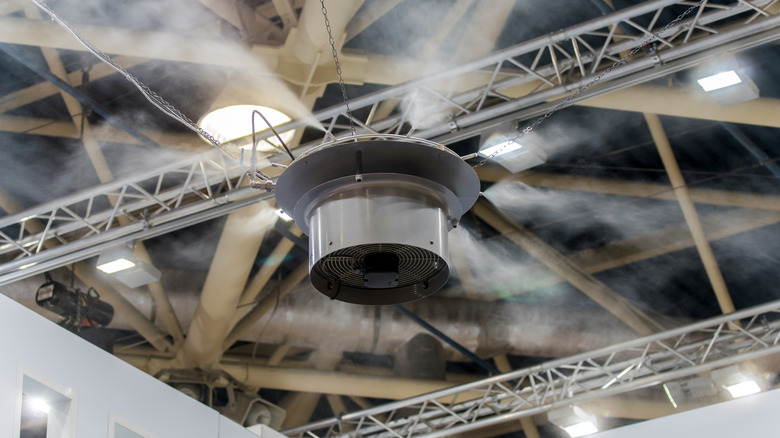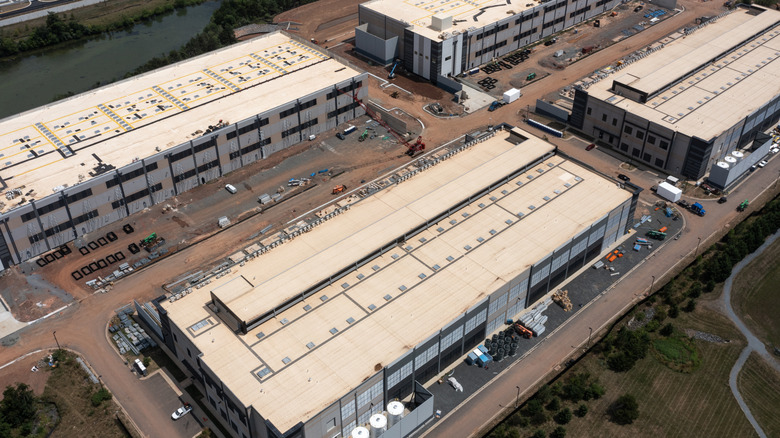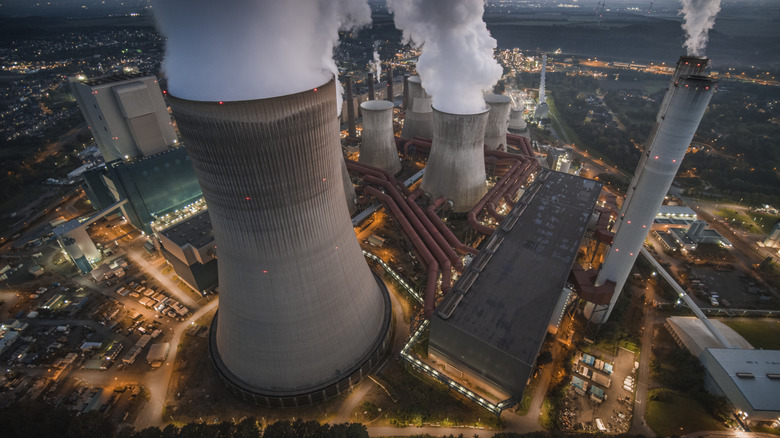Here's How Amazon Is Using Reclaimed Water To Keep Its Data Centers Cool
In June 2025, Amazon announced it was increasing the number of data centers that use reclaimed water. There are currently 20 data centers using treated sewage water for cooling, and by 2030, Amazon intends to increase this number to 120. 2030 is also the date by which Amazon has pledged to become "water positive," something it defines as a commitment to "return more water to communities and the environment than we use in our data center operations." It's currently 53% of the way to achieving its goal. Large data centers need a lot of water to keep them cool enough not to overheat. The rise of artificial intelligence has taken things to a whole new level. Firstly, because more data centers are being built, and secondly, because training and running advanced AI models demands exponentially more computing power, which generates far more heat than traditional digital workloads, resulting in a planet-polluting problem that needs a solution.
AWS (Amazon Web Services) is a brand owned by Amazon that provides cloud computing services, including storage, servers, and AI. It currently has data centers using treated sewage water in Virginia and California. The new plans will expand its recycled water usage to Georgia and Mississippi's data centers and increase the percentage of non-drinkable water used in Virginia. Although unsuitable for drinking, the wastewater is still clean. It undergoes multiple processes, removing 99% of impurities, before being used in AWS's cooling systems. Afterward, the water goes back to the water treatment plant to be used again. Amazon is also using technology to monitor and reduce water consumption, providing treated wastewater for agricultural use in local communities, and funding projects aimed at improving water access and restoring ecosystems in regions where the company operates.
Why data centers need water, and why it's a problem
Data centers are incredibly power-hungry. As servers work, they heat up, and to keep them running safely, data centers rely on cooling systems. There are several methods you can use to cool down data centers. Besides using water to cool servers, data centers also use air conditioning, special liquids to soak up heat, cooling plates attached to computer parts, and big fans. Some, like Facebook's data centers in Oregon, use cold outside air. Although AWS does use other methods, evaporative cooling is its primary solution. Evaporative cooling involves drawing outside air through water-soaked pads, cooling the air as moisture evaporates. While this method is energy-efficient, it consumes large quantities of water. Data centers the size of those AWS uses are known as hyperscale data centers, and each one uses around 550,000 gallons of water per day.
What's more, data centers are often built in places that already have stressed water systems, like California, Arizona, and Texas. A Bloomberg report revealed that around two-thirds of new U.S. data center projects in the last three years are in areas of high water stress. In Arizona alone, there have been 26 new data centers since 2022. This enormous water usage has cascading impacts. In agricultural zones, it competes with farmers, threatening crop production. In urban areas, local governments worry that data centers are overtaxing water supplies. Lawmakers in Virginia have put forward a bill that requires data center companies to carry out an assessment of the impact new builds will have on water resources and local agriculture.
Is Amazon doing enough?
Although Amazon is making improvements in the way it handles its water usage, there are still ways in which it falls short. Meeting 53% of its goal is progress, but that means that, right now, almost half of Amazon's water usage fails to meet its own benchmark. It's also difficult to verify Amazon's claims. The company doesn't publish comprehensive data on water consumption across its data centers.
More importantly, Amazon's water positivity statistic only tells part of the story. It only accounts for the water actually used for cooling within the data centers themselves and doesn't include the vast amounts of water used in the power plants that supply the energy to run them. Indirect usage is a much higher figure than direct use. According to the 2024 United States Data Center Energy Usage Report, U.S. data centers in 2023 used 66 billion liters of water directly and nearly 800 billion liters of water indirectly. Goldman Sachs Research found that data centers were responsible for about 3% of all U.S. power usage in 2022, and this number is likely to increase to 8% by 2030. Last year, Amazon announced it was putting millions of dollars into nuclear power plants, which use even more water than those powered by fossil fuels.
If Amazon is going to make good on its promises for 2030, it will need to account for its ever-growing data center expansion. It plans to invest over $100 billion in data centers over the next ten years, with $35 billion earmarked for projects across the U.S. It's already the biggest provider of cloud computing and AI services in the world. It needs to ensure that it can balance its desire for growth with its commitment to being water positive.


